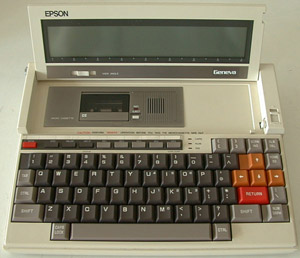
The PX-8 uses microcassette as additional storage medium. Note there are two types of microcassette: Japanese and Philips. here for examples of both.
The PX-8 only supported a two digit year, so is in principle Y2K proof. Alas some extra checks were build in allowing only the range 77 to 99 to be accepted. There are at least three ways to set the date:
- during an INITIALIZATION RESET (see the User Manual) (this is only present in the new OS ROM),
- with CONFIG.COM from the UTIL ROM,
- with setting the DATE$ variable in BASIC.
With the old OS ROM, only years ending on 77 to 99 were allowed. With the new ROM the INITIALIZATION RESET also allows all values for the year digits. The CONFIG.COM, being in the UTIL ROM, still has the check. An image of both ROMs can be found here.
In the Operating System Reference Manual, chapter 3, is some more info on the various reset options.
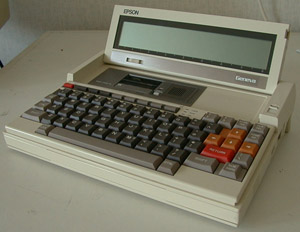
The OS-ROM is 32 kByte, located at the lower half of the memory space. This ROM can be mapped out, replacing it with RAM. The upper half is always RAM. During operation, while at the command prompt, the CCP is loaded and running in the upper memory bank. Of both the BDOS and BIOS, only a 'entry portion' is present in memory. These 'entry portions' are in a relocatable format, as their location can change when the RAM disk and/or User BIOS is resized. These events always require a cold restart. When of either BDOS or BIOS a function is called, the lower bank RAM is replaced by the ROM and the code is executed from there.
The ROM capsules, being B: and C: drive not memory mapped but are accessed via the 6303 coprocessor, just like the serial port disk drives D:, E:, F: and G:. The main Z80 CPU just controls RAM bank switching and the 8251 USART (RS232c).
Background info: Disassembly of the OS ROM (M25030CA), Image of the MAPLE board.

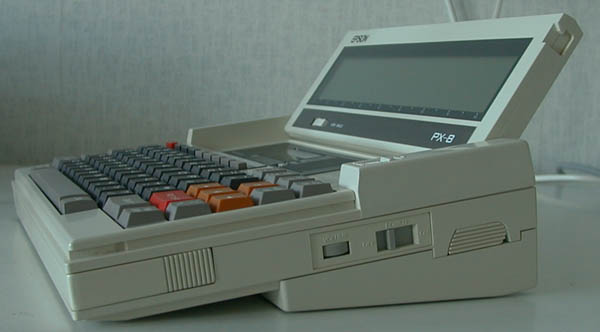
Another option is PXVFS, the PF-10 emulator in MSDOS or OS/2 written by Will Rose. For Linux users there is vfloppy written by Justin Mitchell and friends.
The upper picture shows just the PX-8, the lower one has the
"Intelligent RAM disk" attached. This means a fixed size 120 kByte RAM Disk
as drive A:.
There is another memory interface which can contain PROMS
similar to the B: and C: drive, but bigger. I have never seen one, but
the PROM creation software supports it.
Some internal technical data:
Battery pack: 4.8 V / 1100 mAh NiCd
Careful with replacement!
4 * Sanyo Cadnica N-1300-SC are batteries of a size equal to the original.
"SC" stands for Sub-C, a more ore less standard cell size. A cheaper alternative
are four AA sized Ni-MH cells. The
capacity can be similar or greater than the
original sub-C cells. A disadvantage is the pack wil not fit the original
battery bay.
Mains adapter secondary (EPSON HOOAAG):
6 V / 600 mA DC (pin is minus)
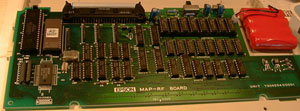
A preliminary picture of the intelligent RAM disk board. The name is correct. It isn't just RAM and some bank switching logic, but a complete Z80 processor system. This is the first battery backupped dynamic RAM application I've encountered!
At this page is a description of a 512 kByte RAM disk and parallel port for the PX-8. The RAM is made available as drive A: and I:, 256 kByte each maximum. An patched operating system ROM is included. The quality of the schema is quite poor, but the structure simple.
There is now a recreated 'Non-Intelligent' RAM Disk for the PX-8 and PX-4, based on static RAM and some GAL-magic.
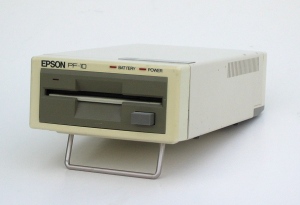
You can turn your PC into several virtual PF-10's with PX8VFS! Print out this picture and attach it to the screen, and it feels almost the same as a real PF-10 :-).
The PF-10 uses 40 tracks (67.5 tpi) on each side of the disk, while the standard is 80 tracks (135 tpi). The logical format (location of the directory) is similar to the QX-10 and TF-20. The actual sector size is 512 bytes (TF-20 & QX-10 use 256 byte sectors). 22disk should be configured to use two steps for each track. The directory uses the first 4 sectors of track 4. Track 0 to 3 are reserved for system files and not used by PX-8 CP/M. The data is stored at the remainder of track 4 and track 5 to 38. Track 39 is not used. 22Disk 1.44 has a definition 'EPS3 Epson PX-8 DSDD 3.5"' which should work.
The virtual library (see below) contains a scan of the PF-10 manual from which this information is derived.
Some technical information.
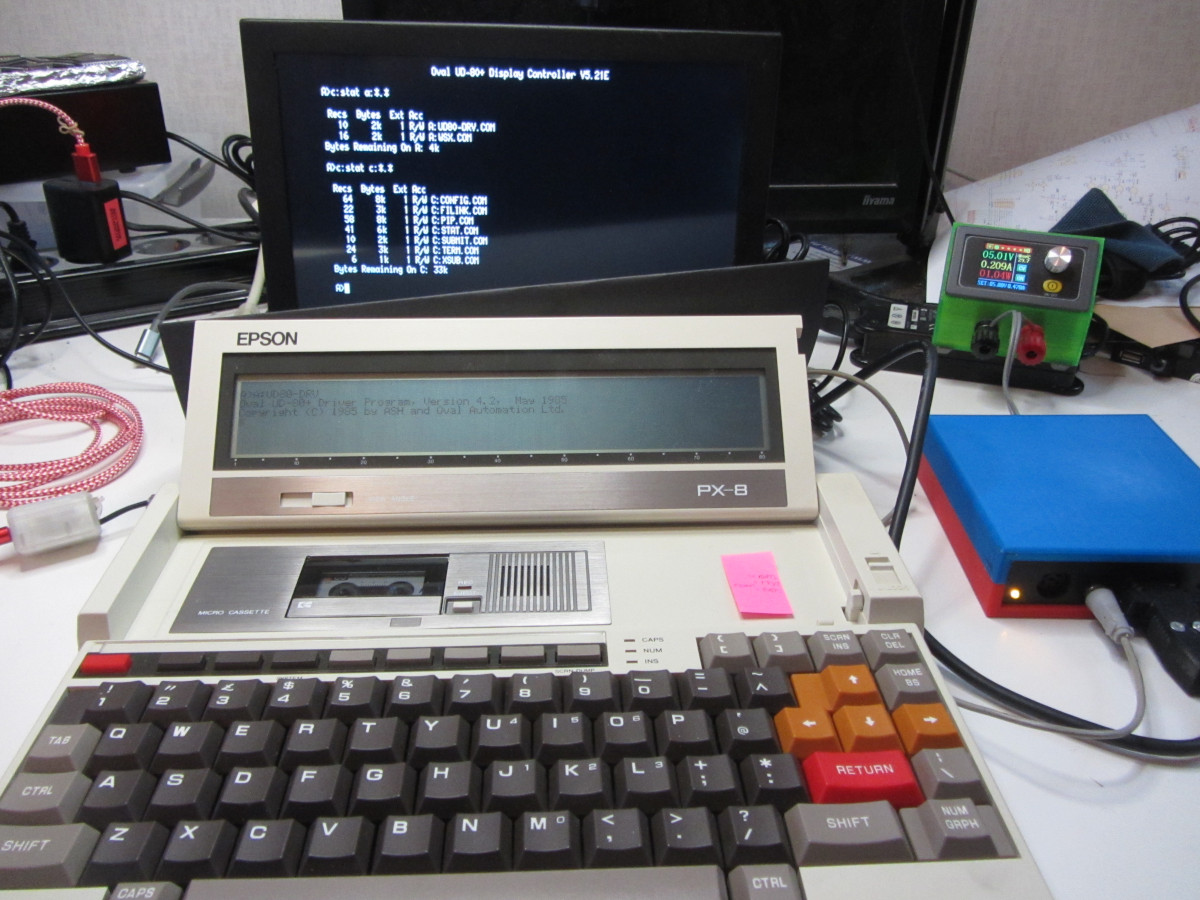
More info here or at hackaday.